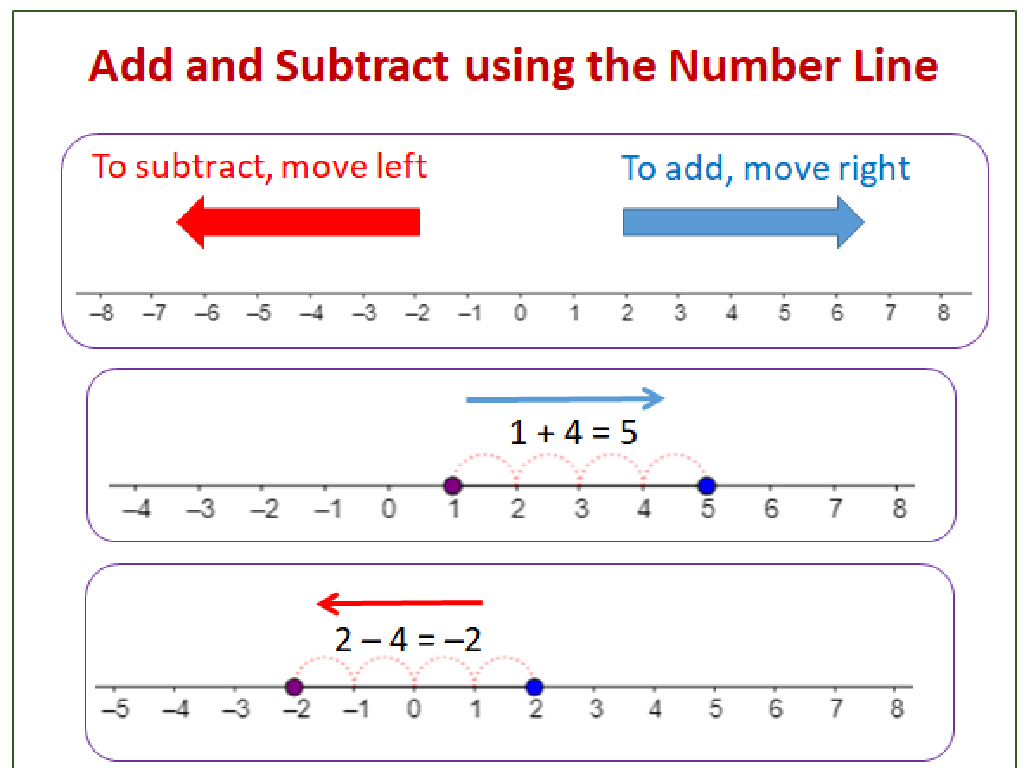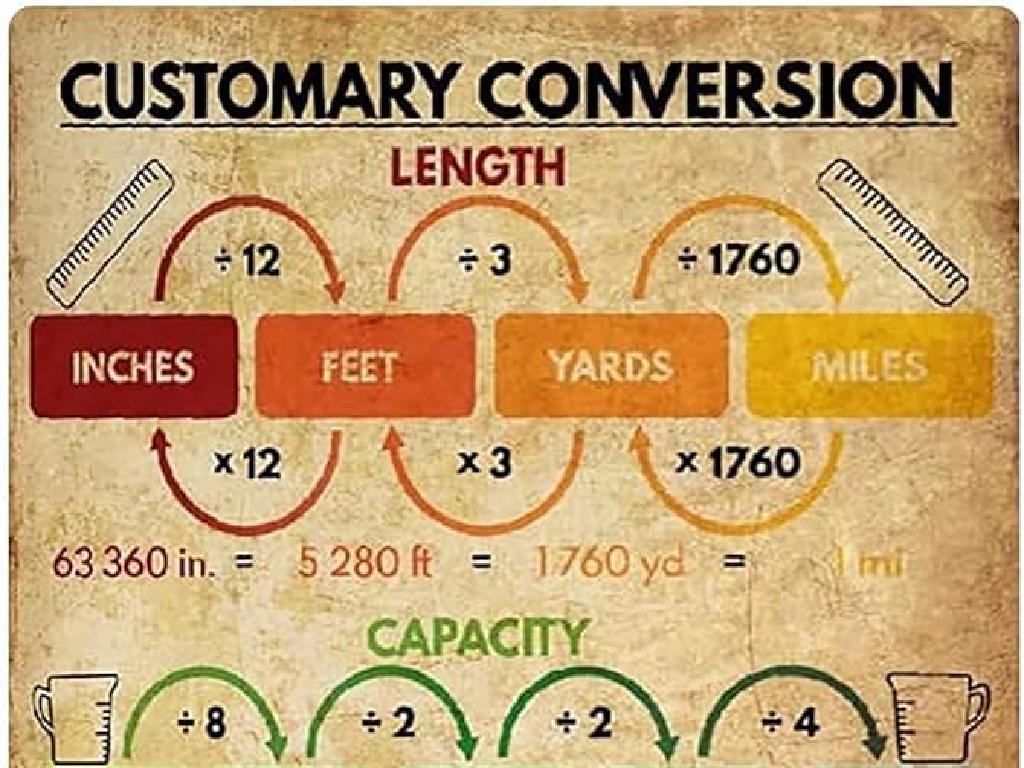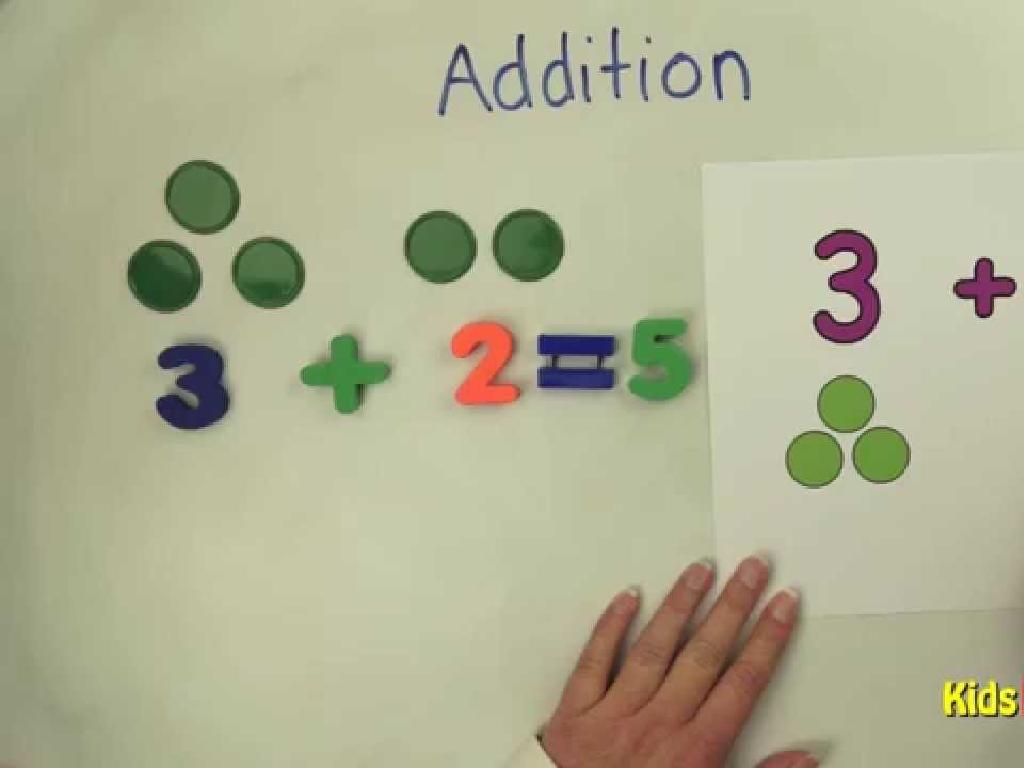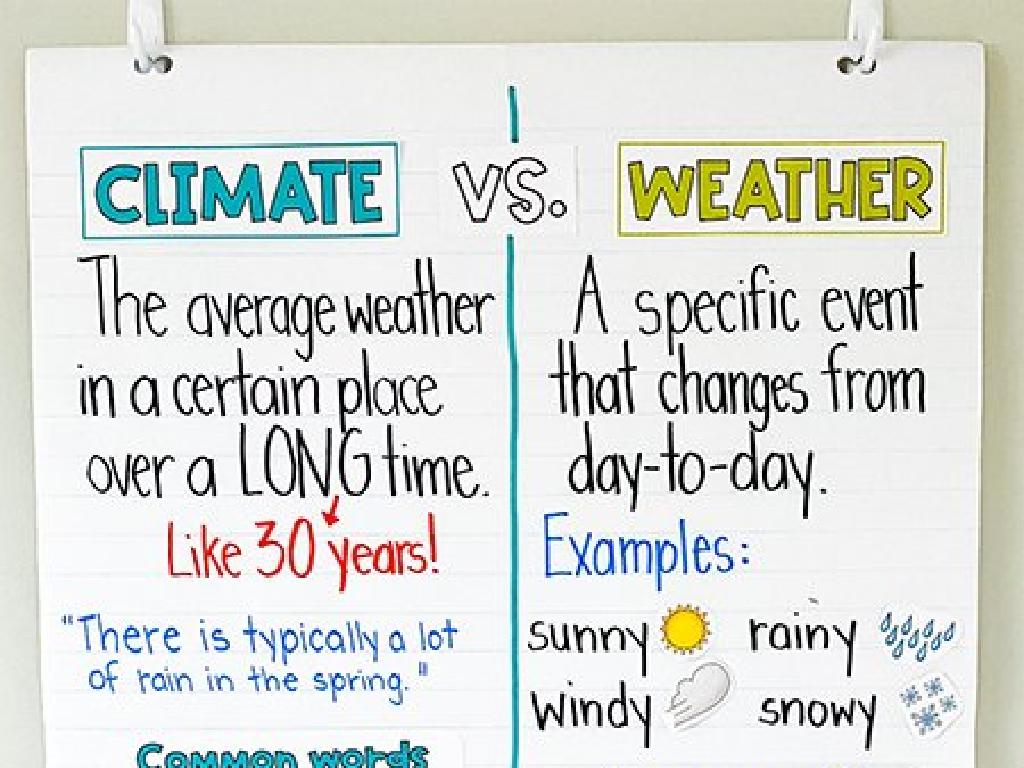Comparing Numbers Up To 100
Subject: Math
Grade: Second grade
Topic: Comparing And Ordering
Summary: This second-grade math presentation teaches students to compare numbers up to 100 using greater than (>), less than (<), and equal to (=) symbols. Through engaging activities like games, number line jumps, and hands-on practice, students learn to identify bigger and smaller numbers, understand place value, and apply comparison in real-life contexts. Regular comparison exercises ensure mastery of this essential foundational math skill aligned with American Common Core standards.
Please LOG IN to download the presentation. Access is available to registered users only.
View More Content
Welcome to Comparing Numbers!
– Learn to compare numbers up to 100
– Grasp bigger vs. smaller concept
– Bigger numbers have more value, smaller have less
– Use symbols: >, means greater, < means less, = means equal
– Practice with examples
– Compare 45 with 32 using symbols
|
This slide introduces second graders to the concept of comparing numbers up to 100. Start by explaining that numbers can be compared to each other to find out which one is bigger or smaller. Introduce the symbols for greater than (>) and less than (<), as well as the equal sign (=). Use relatable examples like comparing the number of apples in two different baskets to help them understand the concept. Provide plenty of practice opportunities with pairs of numbers, and encourage students to use the correct symbols to show which number is greater, which is less, or if they are equal. This foundational skill will help them in many areas of math as they progress in their education.
What Does it Mean to Compare Numbers?
– Understanding comparison
– Comparing is like finding out which is bigger, smaller, or if they are the same size.
– Comparing numbers up to 100
– Is 45 bigger than 32? How about 67 and 67?
– Using symbols: >, ‘ means greater than, ‘<' means less than, '=' means the same as.
– Comparing amounts and objects
– We can compare toys, cookies, or even steps taken!
|
This slide introduces the concept of comparison in mathematics. It’s crucial for students to understand that comparing is a way to evaluate the size or quantity of numbers, objects, or amounts relative to each other. Emphasize the use of comparison symbols and ensure that students can identify and use greater than, less than, and equal to symbols correctly. Provide examples using numbers within 100 to make it relatable and manageable for second graders. Also, extend the concept to comparing things in their everyday life to make the lesson tangible and engaging. Encourage students to practice by comparing things around them, like their snacks or toys, to reinforce the concept.
Using Symbols to Compare Numbers
– Greater than symbol (>)
– Shows one number is bigger, e.g., 65 > 42
– Less than symbol (<)
– Shows one number is smaller, e.g., 28 < 35
– Equal to symbol (=)
– Shows numbers are the same, e.g., 77 = 77
|
This slide introduces the symbols used to compare numbers up to 100. The greater than symbol (>) indicates that the first number is larger than the second. For example, 65 is greater than 42. The less than symbol (<) is used when the first number is smaller than the second, such as 28 is less than 35. The equal to symbol (=) shows that two numbers are the same, like 77 equals 77. Encourage students to practice using these symbols by comparing different pairs of numbers and to understand that these symbols are like little arrows pointing to the smaller number.
Let’s Practice Comparing Numbers!
– Learn to compare two numbers
– Choose the right symbol: >, <, or =
– Example: 45 ___ 53
– Does 45 have more or less than 53?
– Practice together with examples
– We'll compare numbers as a class activity
|
This slide is designed to engage second-grade students in a practical exercise to understand the concept of comparing numbers up to 100. Start by explaining that when we compare, we decide which number is bigger, smaller, or if they are the same. Introduce the symbols for greater than (>) and less than (<), as well as equal to (=). Use the example provided to show how to choose the correct symbol. For instance, since 45 is less than 53, the correct symbol is <, making it 45 < 53. Encourage the students to participate by trying out a few examples together. This will help them grasp the concept of comparison and become comfortable with using comparison symbols. Provide guidance and positive reinforcement as they work through the examples.
Comparing Numbers Using Place Value
– Recall tens and ones places
– Compare tens before ones
– Look at the first digit in each number
– Equal tens? Then compare ones
– If tens are the same, look at the ones place
– Example: 47 vs. 38
– 47 has more tens than 38, so 47 is greater
|
This slide is aimed at helping second-grade students understand how to compare two-digit numbers using their place values. Start by reminding them of the concept of tens and ones, which they have learned in place value. Emphasize that when comparing numbers, they should start by looking at the tens place to see which number is larger. If the tens are the same, then they should compare the ones place. Use the example 47 versus 38 to illustrate this point. Since 4 (in the tens place of 47) is greater than 3 (in the tens place of 38), 47 is the larger number. Encourage students to practice with more examples and ensure they understand that the tens place holds more weight than the ones when comparing numbers.
Fun with Comparing Numbers
– Learn to compare numbers
– Play ‘Greater or Less’ with cards
– Use playing cards to compare numbers
– Determine the greater number
– Is 8 greater than 5? Yes, it is!
– Enjoy and learn with friends
|
This slide introduces a fun and interactive game to help second graders understand the concept of comparing numbers up to 100. The game ‘Greater or Less’ involves using playing cards to compare numerical values. Students will draw cards and determine which number is greater. This activity not only reinforces their understanding of number comparison but also adds an element of play to learning. Teachers should ensure that each student has a chance to participate and encourage them to explain why one number is greater than the other. Possible variations of the game could include using dice, number spinners, or digital number generators for the activity.
Class Activity: Number Line Leap
– Create a human number line
– Stand on your special number
– Listen for two numbers
– Jump to show the greater number
– If I say 45 and 32, jump towards 45 because it’s bigger!
|
This activity is designed to help students understand the concept of comparing numbers in a fun and interactive way. Set up a number line in the classroom with numbers up to 100. Each student will be assigned a number and will stand on that spot on the number line. When the teacher calls out two numbers, the students standing on those numbers will jump to show which number is greater. This visual and physical activity will help reinforce the concept of number magnitude. For variation, you can also ask which number is smaller, or have students hold up signs with ”, or ‘=’ to compare the numbers. Ensure safety during the activity and encourage all students to participate.
Conclusion: Mastering Number Comparisons
– Celebrate learning number comparisons
– Recall using >, <, and = symbols
– Symbols show if one number is greater, less, or equal to another
– Encourage regular practice
– Try comparing numbers every day to get even better!
– Review key comparison concepts
– Go over how to determine which number is bigger or if they are the same
|
As we wrap up our lesson on comparing numbers up to 100, it’s important to reinforce the achievements of the students. Congratulate them on their hard work and remind them of the symbols used to compare numbers: greater than (>) when the first number is larger, less than (<) when the first number is smaller, and equals (=) when both numbers are the same. Encourage them to practice these skills regularly, as familiarity will lead to mastery. Review the key concepts by asking students to compare a few pairs of numbers as a class, discussing the thought process behind each comparison. This will help solidify their understanding and prepare them for more advanced math concepts.





